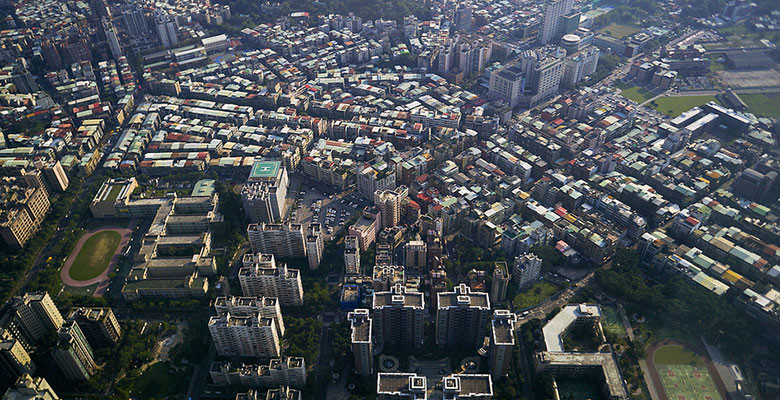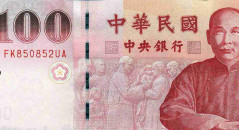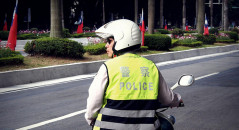
Most people will feel comfortable in Taipei, but other cities can offer a more authentic Taiwanese feel
When considering where to live in Taiwan, there are a number of factors to take into account: availability of jobs, convenience of transportation, proximity of countryside, quality of education establishments, standard of the nightlife, number of English speakers, cost of living, and much more besides. The majority of white-collar foreign nationals in Taiwan live in the capital Taipei, but there are also fair-sized foreign communities in the other major cities. The main variable in considering cost of living is accommodation. This section will outline the benefits of living in different areas of the country.

The major cities of Taiwan
Image by Michael A. Cannings (licensed under the Creative Commons)
Taipei
Taipei is the political, economic, and cultural capital of the country. Including the core of Taipei City itself and the surrounding hinterland of New Taipei and Keelung, this Greater Taipei area accounts for a third of the population of Taiwan. There is huge variation across this region, from chic urban neighbourhoods to rugged costal cliffs, rolling mountains to congested suburbia. Central Taipei is the most costly area to live in the country, particularly the affluent cantons around Dunhua South Road, Tianmu, and Zhongxiao East Road. As you move further away from the city centre rental prices come down sharply, so cost-conscious residents will prefer the commuter belt around the city, including Neihu, Xindian, Xizhi, Zhonghe, and Banqiao. In these more peripheral areas a three-bedroom apartment can be had for somewhere in the range of NT$15,000—30,000 per month.
For many of the factors you will want to consider, Taipei will come out top. For work, particularly non-teaching jobs, the vast majority of positions available will be in Greater Taipei, with a smaller number in Hsinchu and Kaohsiung (see below). For nightlife, museums, culture, and concerts, Taipei is unrivalled. It is also convenient to get from the city centre to the thickly forested mountains that encircle the city, giving excellent hiking and biking opportunities. Taipei’s transport system is cheap, reliable and convenient, with a comprehensive network of Mass Rapid Transit, railways (both high-speed and conventional), and buses to move you around the city and beyond. The main Taoyuan International Airport is a 45-minute trip from downtown, and Songshan Airport, which offers domestic and cross-Strait flights, is even closer.
One downside of Taipei is the climate, with rain on average once every two days, sticky heat in the summer and an average high temperature of 34ºC (93ºF). Winters are damp and clammy, and while the average low of 14ºC (57ºF) doesn’t sound too low, taken in combination with uninsulated concrete construction techniques and a lack of central heating, the cold can trouble even veterans of far northern climes. Cost of living is another obvious negative, with apartment rental easily reaching double the price you can expect outside the capital. Taipei is also a crowded city, and while some thrive in the bustle of a metropolis, lovers of peace and quiet would do well to look elsewhere unless you can afford one of the more well-to-do leafy neighbourhoods. Taipei residents are said by others from “down south” to be cold and unfriendly, but as the Taiwanese people in general are a friendly lot, this is only true relative to the sometimes overwhelming hospitality you will receive elsewhere in the country.
Taipei’s significant foreign population means there is a greater availability of businesses catering to this crowd, including western restaurants, bars, supermarkets, and bookshops. It also means the government is more geared towards offering services in English. A side effect of this relatively large number of western residents is a corresponding reduction in the amount of interest Taiwanese people will show in you. In the countryside a foreigner showing up may be cause for a great deal of curiosity and attention that some find unwelcome, but Taipei residents are generally blasé about the outsiders in their midst. The capital also boasts the best-regarded Mandarin program in the country, National Taiwan University’s International Chinese Language Program.
Kaohsiung
Taiwan’s second city is in the south of the island, with a correspondingly warmer winter and much lower rainfall than the north. It is at heart an industrial port city, and a decade ago was derided by many foreign residents as one of the worst places in Taiwan to live: polluted and grim. Successive administrations have succeeded in improving the infrastructure, promoting culture, and cleaning up both the air and the water around the city, to the point where Kaohsiung is now considered a much more habitable place than ten years ago. A new MRT system and a raft of cultural projects have made life more comfortable, and coupled with the export-oriented nature of much of Kaohsiung’s business, the city is starting to tempt larger numbers of expats into moving there.
Taichung
In the centre of the western plains, Taichung is said to have the best weather in the country. The city boasts some great museums, and is close to mountains that allow for an easy escape from urban life. What was a thriving independent music scene has been dampened by the recent closure of over 300 pubs and music venues after a fire at one nightspot killed nine people in 2011. The third largest city in Taiwan, Taichung has undergone massive redevelopment in the past few years, though much of the new part of town remains quiet, with new office buildings standing empty and new apartments gathering dust. The city is also well known for its political corruption, though for the most part this should not affect foreign residents unduly.
Tainan
The former capital of the island, Tainan is home to a lot of Taiwan’s cultural history, ranging from the Dutch era in the 1600s to the Japanese administration of the early 20th century. A city with a laid-back feel, Tainan enjoys warm winters and hot summers, and is considered a bastion of bentu or native Taiwanese sentiment, as opposed to the more Chinese feel of Taipei. Perhaps the most livable west-coast city outside Taipei, Tainan suffers from a dearth of employment opportunities for English speakers outside of the English-teaching industry. The most prestigious further education establishment in the city, National Cheng Kung University, has a popular Mandarin program for non-native speakers.
Hsinchu
Known to outsiders primarily as Taiwan’s “Silicon Valley”, Hsinchu is also known as the Windy City. The Hakka ethnic group is prevalent in the city, lending it a different flavour from the rest of the major cities, both in terms of cuisine and festivals. It can be a little dull over a long period though as its relatively small size results in a lack of entertainment options. The engineering-based foreign segment of the city may choose to live in the cooler hills outside the city, and Taipei is not too far away for weekend entertainment.
The East Coast
Taiwan’s eastern seashore is rugged, with mountains plunging directly into the sea at many points. Even the largest settlements here are small compared to the densely populated west coast. The majority of Taiwan’s 380,000 strong Aboriginal population live in this strip by the sea, and the mountains behind. The east coast is by almost every measure poorer, less developed, and more isolated than the rest of Taiwan, but it also has spectacular scenery, good beaches, and excellent surfing and diving. Conveniences may be difficult to find, but for many the splendour and tranquility of this region outweigh the disadvantages.
The Rest of Taiwan
A lot of Taiwan is not covered by the brief outlines above, primarily because few migrants choose to live in the rest of the country. Counties like Changhua and Chiayi are part of the industrialised west coast, but rather than being idyllic getaways from the big cities, most of these small towns have a lot of the disadvantages of the major settlements, with few of the advantages. The small islands around Taiwan will offer a more bucolic lifestyle, with the downside of distance and difficulty of travel.
Photo by Antonio Tajuelo.



